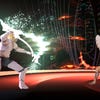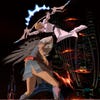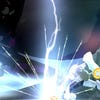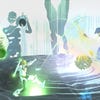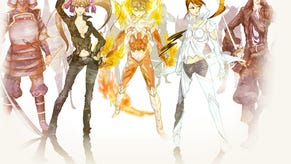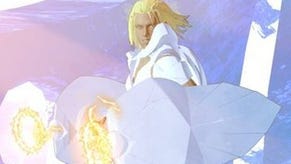The Making of El Shaddai
How the most stratospherically mad game of the year came into being.
I can't help but laugh at this point, because El Shaddai's subversion of your expectations is the precise thing that makes it so appealing. It comes across as terribly earnest at first, and when it reveals itself to be, in fact, utterly mad, it's a wonderful discovery. If you play a lot of games, it's very easy to feel like you know everything a game has up its sleeve after the first hour or two. To find a game that messes with your preconceptions is inordinately refreshing.
It's also the very clear product of a strong creative vision, something that seems to be coming out of Japan less and less frequently these days. Tempered by the influence of large publishers looking for cross-cultural appeal, there's been noticeable identity loss in the Japanese games industry over the past three to five years, if not even longer. Individualism gets passed through the many hands of a large development team, and what comes out at the end can feel hollow.
"I really feel that way too," Sawaki agrees. "Personally I feel that in order to stay on the unique and individualistic course, you have to have a specific mindset where you're committed to what you want to accomplish. Myself, I've been in big companies, and I'm very Japanese, so I can understand that Japanese people like to feel secure, and try not to do things that are off-limits or different. It's a cultural thing."
But with El Shaddai, things were done differently. "In general, I feel that individuality is compressed. In my case, with this team, I tried to pull out the individuality in my talented team," Sawaki explains. "There were a lot of talented people. Especially at the beginning, when I was coming up with the whole art style, I had three more really good artists, and so the four of us together were the unit that led the whole team. I couldn't have done it without them."
The two main characters of El Shaddai, though - white-armoured Enoch and smooth-talking, modern Lucifel - are Sawaki's creations, products of his long history in character design. Interestingly, the two characters were designed as opposite stylistic extremes - one designed to appeal in Japan, the other abroad.
"Lucifel's very thin, very elegant, very pale, a bit of a gay-boy look. Japanese men and women go for that style, they think that's good looking. I look like him," grins Sawaki. "Thin is the definition of good-looking. Western, though, you want to get tanned, you want to be muscular, have a good build - that's Enoch."
But the Western reception of Enoch has come as a bit of a surprise for Sawaki. "I just realised here at E3 that Enoch actually isn't that macho," he laughs. "Even he is kind of effeminate to Western tastes. Now I understand, I look around and everybody walking about is so strong-looking and big, and characters in Western games are huge."
Speaking of male depictions, it interests me that El Shaddai does not resort to the eye-rolling female character stereotypes that Japanese games often unfortunately fall back upon, choosing to depict handsome and occasionally sparsely-clad men rather than women whose clothes disappear when they perform a magic spell.
"A lot of Japanese gamers don't have girlfriends," offers Sawaki as an explanation. "They've got a crooked way of looking at women, that's probably why you get these depictions. Me, though, I have a wonderful girlfriend," he grins.
I'm hardly surprised.



